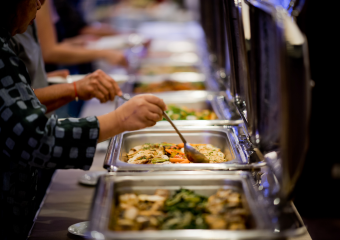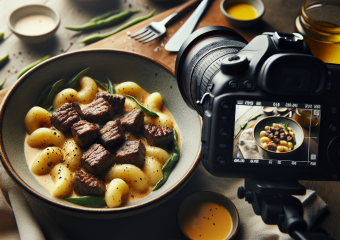Mighty Magnesium, by Charlyn Fargo – Creators Syndicate

I’m often asked if you need to take a particular supplement. Magnesium seems to be especially popular right now. It’s been in the news, with a study published in July 2021 in Advances in Nutrition regarding its potential role in reducing cardiovascular disease and cancer.
But here’s the important thing: You need to get magnesium from food, not supplements. The systematic review and meta-analysis of prospective cohort studies found higher dietary — but not supplement or total — magnesium intake associated with lower cancer and all-cause mortality, but not with cardiovascular disease mortality. The study found that each additional intake of 100 milligrams per day of dietary magnesium was associated with a 6% and 5% reduced risk of all-cause and cancer mortality, respectively.

The recommended daily allowance for magnesium is 320 milligrams for women over the age of 30, and 420 milligrams for men over 30. However, the average American adult diet provides about 50 to 75 milligrams below what is needed. Most of us need to be eating more foods that are high in magnesium.
Just what does magnesium do?

Magnesium can play a role in regulation of blood pressure and vascular function, antioxidant and anti-inflammatory defenses, as well as blood sugar control and insulin sensitivity, maintenance of healthy cells and bone health.
So, what should you be eating? Green leafy vegetables, cruciferous vegetables, bananas, citrus fruits and mangoes, for starters. Here’s a list of other magnesium-rich foods.
— Green vegetables — especially dark green leafy vegetables and okra. The U.S. Department of Agriculture National Nutrient Database shows spinach, Swiss chard and beet greens are highest in magnesium. But since these greens are high in oxalate, which binds to magnesium and reduces intestinal absorption, cooked forms of these vegetables and others (such as kale) may be top sources.

— Deep-orange winter squash and sweet potatoes — but sweet potato fries and chips and other orange vegetables (like carrots and sweet peppers) aren’t as high in magnesium.

— Tomato-vegetable juice and tomato juice — (low-sodium preferred for most people).
— Whole grains — cooked intact grains (brown rice, bulgur, quinoa) and whole-wheat pasta are even higher in magnesium than other whole-wheat grain products.
— Pulses (dried beans and peas, lentils, chickpeas) and soy foods — especially soy options like edamame and tempeh.
Nuts and seeds — peanut and almond butters, too.
Q and A
Q: Fortified juices, flavored and infused waters, coffee, tea, sports drinks and antioxidant beverages are all the rage. Are drinks viable sources of antioxidants?
A: There are upwards of thousands of different substances in whole plants that can act as antioxidants. So, you don’t have to consume antioxidant beverages to get the desired compounds that may help fend off oxidative stress in the body — they are readily available in plant foods. Think food first. If you eat a balanced diet consisting of plenty of fruits, veggies, lean proteins, healthful fats and whole grains, you will likely take in enough antioxidants on a daily basis. When it comes to beverages, check the label for added sugars and calories.
RECIPE
Here’s a recipe for these late summer days — and it’s high in magnesium too. It’s from Eating Well magazine. Don’t be put off by the recipe’s name. Massaging the kale tenderizes it and helps the greens absorb more of the dressing.
Massaged Kale Salad with Roasted Sweet Potato and Black Beans
Servings: 4
1 large sweet potato, cut into 1/2-inch thick wedges
5 tablespoons extra-virgin olive oil, divided
2 teaspoons ancho chili powder
1/2 teaspoon salt, divided
6 medium shallots, peeled and quartered
3 tablespoons lemon juice
1 large clove garlic, grated
1 pound kale, stemmed and torn
1 (15-ounce) can no-salt-added black beans, rinsed
1 cup cooked quinoa
1/2 cup crumbled feta cheese
1/2 cup unsalted pepitas, toasted
Position racks in upper and lower thirds of oven; preheat to 425 F. Toss sweet potato with 1 tablespoon oil, chili powder and 1/8 teaspoon salt on a large, rimmed baking sheet. Toss shallots with 1 tablespoon oil and 1/8 teaspoon salt on another large, rimmed baking sheet. Roast the vegetables, flipping once, until tender and caramelized, about 20 minutes. Meanwhile, whisk lemon juice and garlic with the remaining 3 tablespoons oil and 1/4 teaspoon salt in a large bowl. Add kale and massage with the dressing until bright green and shiny and the volume is reduced by about half. Add beans, quinoa, feta, pepitas and the shallots. Toss to combine and serve topped with the sweet potato. Serves 4.
Per serving: 588 calories; 21 grams protein; 64 grams carbohydrate; 30 grams fat (7 grams saturated); 14 grams fiber; 12 grams total sugars (0 added); 691 milligrams sodium.
Charlyn Fargo is a registered dietitian with SIU School of Medicine in Springfield, Illinois, and the current president of the Illinois Academy of Nutrition and Dietetics. For comments or questions, contact her at [email protected] or follow her on Twitter @NutritionRD. To find out more about Charlyn Fargo and read features by other Creators Syndicate writers and cartoonists, visit the Creators Syndicate website at www.creators.com.
Photo credit: MIND FAVOUR at Unsplash





